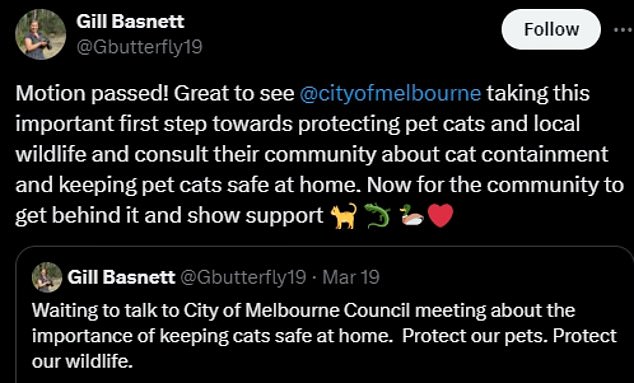A nationwide ban on cat owners could be imposed, potentially saving the country billions of dollars, and a new poll reveals a majority of Australians would support it.
The rules could ban domestic cats from going outdoors and impose heavy fines on owners if they do not keep them indoors permanently.
Some councils, along with the entire ACT, are already imposing the ban, while others, such as Geelong and the City of Melbourne, are in the process, but there are new calls to impose a blanket ban nationwide.
A survey published by the Biodiversity Council in March this year found that only one in 12 people, or eight per cent of the population, opposed such a ban.
In addition to saving millions of native animals that would be killed by domestic and feral cats each year, the ban could also reduce the impact of cat diseases transmitted to humans, which cost the economy an estimated $6 billion a year.
The City of Melbourne is holding community consultations on whether cat owners should be banned from letting their cats outside.
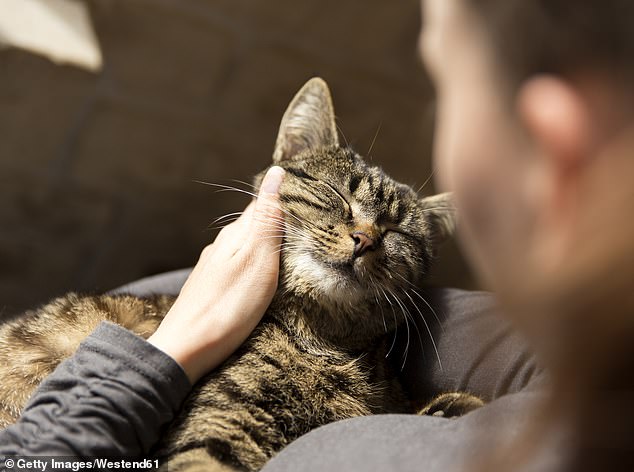
An increasing number of councils are imposing cat curfews or rules requiring pet cats to be kept indoors, but this could become national law, and research shows that most people support the idea.

Domestic and feral cats allowed outdoors are one of the main threats posed to native wildlife
The survey by Monash University researchers asked more than 3,400 people whether they would support a policy that “required cat owners to keep their cats contained on their property.”
“We found that a clear majority (66 percent) of people support containment of cats,” researcher Jaana Dielenberg said this week.
‘A surprisingly small proportion, about one in 12 people (8 percent), are opposed.
“The remaining 26 percent were ambivalent and chose neither support nor opposition.”
A draft threat reduction plan published in December by the Department of Environment proposed uniform rules across the country for the containment of domestic cats, as well as banning domestic cats entirely from nearby high conservation value areas.
The rules would protect wildlife and help reduce the number of feral cats.
But in addition to this, Dielenberg said it would also reduce the incidence of several diseases that humans can contract from cats.
‘This costs Australia more than $6 billion a year based on healthcare costs, lost income and other related expenses.
«The most widespread of these diseases is toxoplasmosis, a parasitic infection that can be transmitted to humans but must complete its life cycle in cats.
“Australian studies have reported human infection rates between 22 percent and 66 percent of the community.”
The infection can cause illness, affect pregnancy and, in rare cases, can be fatal.
Most infected people do not become ill, but there are still thousands of hospitalizations each year and it is thought that the infection, which does not go away but remains latent, can affect brain function.
Studies have linked cat-borne infections to higher rates of car accidents, mental health problems, and self-harm.
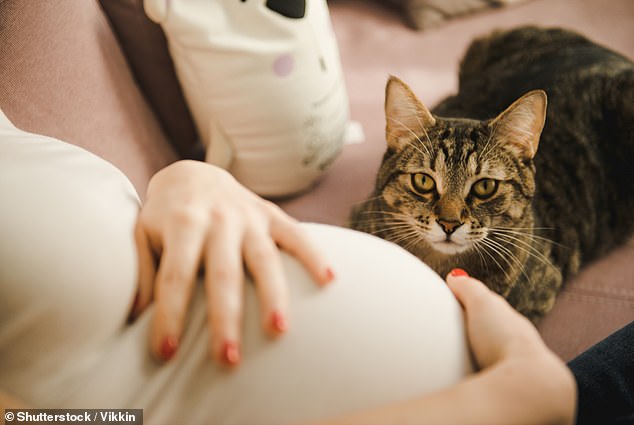
Cat-borne diseases, such as toxoplasmosis, are surprisingly common and can cause complications in brain function and pregnancy.
More than a third of Australian councils now require cats to be confined overnight or 24 hours a day.
While councils are responsible for pet issues, state and territory laws greatly influence what councils can and cannot do.
In New South Wales and Western Australia, state laws prevent councils from requiring the containment of cats except in specific circumstances, such as in declared food preparation areas in New South Wales.
State or national bans would solve these problems.
“Amending the law in New South Wales to implement 24/7 cat containment rules is a simple step that would have profound benefits for our native wildlife,” Advocacy Manager Jack Gough said. of the Invasive Species Council.
‘Councils across the state are clamoring for this amendment so they can protect local bushland from the huge impacts of stray domestic cats.
“The New South Wales law is in stark contrast to the ACT, which requires residents to contain their cats, or in Victoria, where almost 50 per cent of councils have introduced cat containment rules.”
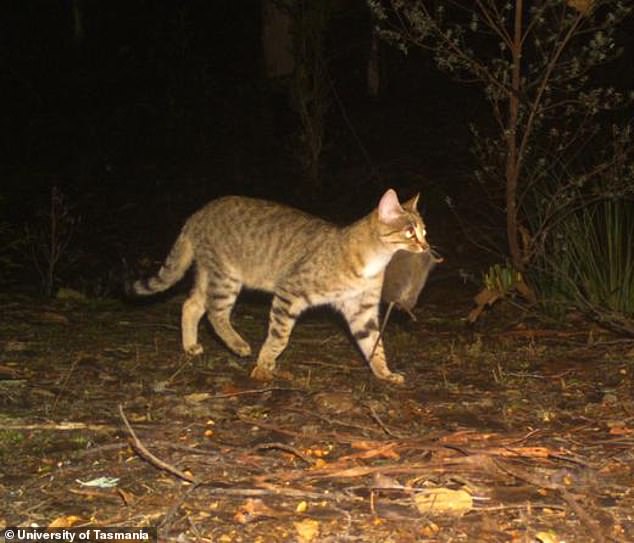
Pictured is a wild cat in Tasmania after hunting a native marsupial
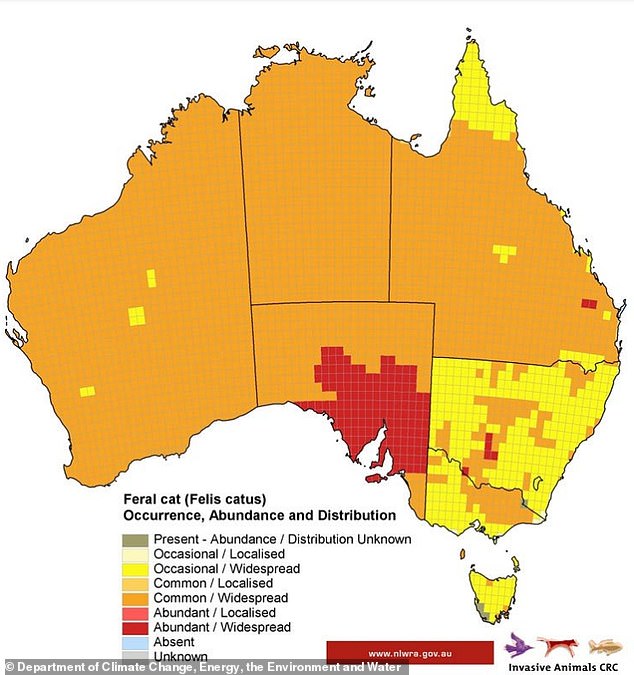
This map shows the distribution of millions of feral cats in Australia. They are more common in the interior and abundant in parts of South Africa.
On average, a stray cat kills 186 reptiles, birds and mammals per year, while a feral cat kills 748.
When this is scaled up to the millions of cats in Australia, it’s a huge problem, with cats playing a major role in most of Australia’s 34 mammal extinctions since colonization.
There are currently 110 native mammals listed as threatened in Australia.
One example is the kowari, a small marsupial that was once common in outback Australia, but is now only found in a small section of desert in southwestern Queensland and northwestern South Africa.
Threats to the Kowari population are mainly feral cats and foxes, along with livestock farming, which reduces ground cover and tramples burrows.
There are only an estimated 1,200 left in the wild, and the government changed their status from vulnerable to endangered in November.
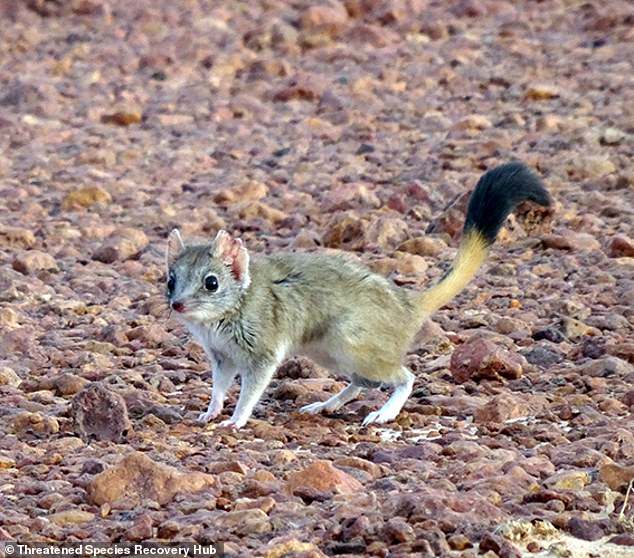
The kowari, a native marsupial found in outback Australia, was recently upgraded to endangered status, courtesy largely of feral cats.
Ms Dielenberg, who is also the Biodiversity Council’s communications and engagement manager, said that with the level of support for a general cat containment rule in the community, “the time might be right for a nationwide change in the way we handle our cats.
“Wider adoption of keeping cats safe at home would have great benefits for cat welfare, human health, local wildlife and even the economy,” he said.
‘Requiring that domestic cats be contained is a good political option. But to get the full benefits, we also need to invest in effective communication to communities, offer rebates to help contain cats, and make sure the rules are followed.”

